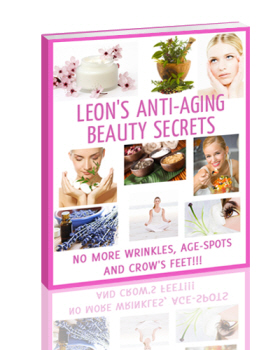Acne is Not Spots
October 21, 2011 by Owen Jones
Filed under Skin Care
There are various kinds of acne, named according to how or why the acne arose. Some of the types of acne are: acne conglobata (chronic boils); acne fulminans (an extreme form of conglobata); acne cosmetica (caused by cosmetics); acne keloidalis nuchae (from shaving); acne medicamentosa (caused by starting or stopping a medication); acne rosacea (redness on the face); baby acne; hormonal acne; cloracne and the common variety, acne vulgaris (also known as ‘puberty spots’). In this article, we will take a closer look at acne vulgaris.
Acne vulgaris may be defined as: ‘an inflammatory disease of the skin, caused by changes in the pilosebaceous units (skin structures consisting of a hair follicle and its associated sebaceous gland). Acne lesions are commonly referred to as pimples, spots or zits’ (according to Wikipedia).
Acne is most often found in Western teens, although it does occur in every country in the world, so there could be a genetic weakness to it. It is possible that it could be an abnormal reaction to fairly normal levels of testosterone. For most sufferers, the condition lasts only until adulthood, probably only a few years or at most ten. For others, however, it can be a life-long recurring problem. It most often affects the face, upper-chest, upper-arms and back. However, an occasional spot does not constitute acne.
Acne vulgaris appears in various forms, which include: whiteheads, resulting from pores that are totally blocked, trapping sebum (oil), bacteria, and dead skin cells, causing a white spot on the surface; blackheads, resulting from pores which are only partially blocked, allowing some of the trapped sebum, bacteria, and dead skin cells to slowly drain to the surface (the black colour is not a result of dirt, but is a reaction of the skin’s own pigment, called melanin, with the oxygen in the air); papules, which are inflamed, red, tender lumps with no head and pustules, which are like whiteheads, but are inflamed, and look like red circles with a white or yellow centre.
Whiteheads do not often last for a long time; blackheads can last a long time and pustules are what people call spots or zits. Severe acne vulgaris is characterized by nodules and cysts. A ‘nodule’ is a much larger and more painful sort of pustule and can sometimes last for months. Nodules are large, hard lumps just under the skin’s surface. They often cause scarring and should never for any reason be squeezed, since this could cause them to last for months longer.
A ‘cyst’ may look similar to a nodule, but it is full of pus and has been defined as having a diameter of at least 5mm and, again, can leave scars and cause pain. Squeezing an acne cyst may cause a more severe infection and more acute inflammation which may last quite a bit longer than if it had not been squeezed. Skin experts have ways of reducing the swelling and avoiding scarring with both nodules and cysts. It is just a myth that acne sufferers are not meticulous about cleanliness.
In fact, over washing can irritate acne. There are many, many false ‘cures’ on the market and many, many old wives’ remedies. However, any good skin expert would advise you that there is no sure-fire cure for acne and that the sufferer has to follow a deliberate regimen of cleaning until the acne eventually ‘disappears’ on its own.
Owen Jones, the writer of this piece, writes on many subjects, but is at present involved with Acne Treatment During Pregnancy. If you are interested in acne, please go over to our website now at Treating Acne Scars


